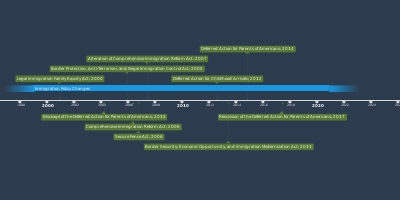21 déc. 2000 - Legal Immigration Family Equity Act; 2000
Description:
The Legal Immigration Family Equity Act (LIFE Act) was the last amnesty to be accepted and passed in the year 2000 on December 21. It was introduced by Representative Harold Rogers to the U.S House of Representatives on the 25th of October on the same year it was passed by Congress and signed by former President Bill Clinton. The LIFE Act was a law that incorporated previously passed laws and amendments. This act also allowed three main provisions which were alterations for a new temporary visa, expansion of K-visa eligibility, and late amnesty lawsuits.New Temporary Visa: An altered visa named V-visa was a creation that came out of the LIFE Act. The temporary V-visa was for spouses and minors of permanent residents; this visa allowed them to continue their wait for their own permanent residency in the United States by visiting their citizen relatives for a long period of time since the wait for the new visa took about 3 years.
Expansion of K-visa eligibility: Before the expansion, the K-vis only allowed out-of-country fiancées to enter the country to marry their citizen partners. After the LIFE Act, non-citizen fiancées were allowed to enter and work in the U.S legally if their applications were pending or even if they were planning to submit an application in the future.
Late Amnesty Lawsuits: There were three class-action lawsuits against the Immigration and Naturalization Service which were CSS v. MESSE, LULAC v. RENO, and INS v. Zambrano. The LIFE Act let people who applied for class action status under one of these lawsuits to apply to be lawful permanent residents. This also led to the individuals being eligible to stay of deportation, let them work legally in the U.S, and let them even travel with pending applications.
Ajouté au bande de temps:
Date:
21 déc. 2000
Maintenaint
~ Il y a 24 ans
